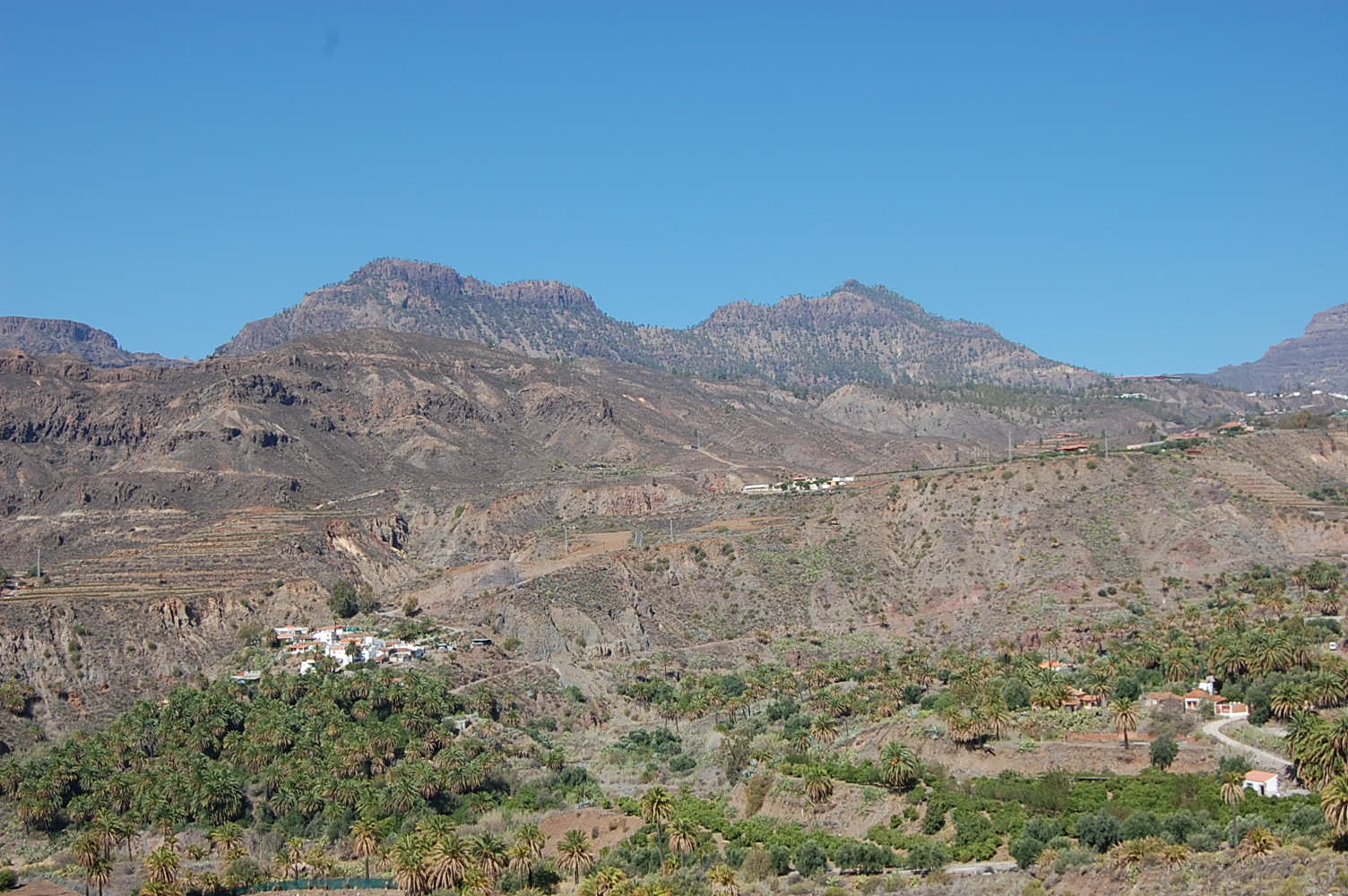Gran Canaria
Gran Canaria is for many the most complete, varied and cosmopolitan island of the archipelago, not in vain it is known as "The Miniature Continent". In it you can find samples of almost all the Canarian landscapes: cities, beaches, desert dunes with an oasis and its palm grove, cliffs or crags on the sea, a peninsula, ravines, volcanic cones, calderas, lava malpais, rocks, forests laurisilva or pinares ... It is also one of the hardest hit by overcrowding, urban development and tourism business speculation. But it is sure that this hospitable island offers visitors a little bit of everything they expect to find in the Canary Islands.
General information
Gran Canaria -which was incorporated into the Crown of Castile in 1483 and whose first inhabitants were called Canarii-, is located almost in the center of the Canary archipelago, between the islands of Tenerife and Fuerteventura. It is shaped like a circle, with a diameter of 48-49 km. long, and its surface is 1,523 km².
With 236 km. of coast, the island relief is increasing towards the center, where the highest points are: the Pico de las Nieves (1,950 m.) and the Roque Nublo (1,813 m.), of great sentimental value for the people of Gran Canaria. The coastline is varied, predominantly low and sandy beaches in the SE - from Punta de Gando to Meloneras, where Playa del Inglés and the dunes of Maspalomas, tourist places par excellence, stand out for their length and beauty; in the SW and W -from Las Meloneras to Puerto de las Nieves- cliffs predominate, although stony beaches can also be found at the mouth of the ravines, this being a more solitary and unknown landscape, even for the natives themselves; in the N and NE the two types of coast alternate, highlighting the area of San Felipe, with its natural rock pools, and of course, the two capital beaches: Las Canteras -the jewel of the city- and Las Alcaravaneras.
The island, together with Lanzarote and Fuerteventura, is part of the eastern province of Las Palmas and, with 745,812 inhabitants, it is the most populated and densest - of population, of course - in the archipelago, as well as the third largest, after Tenerife. and Fuerteventura. Administratively it is divided into 21 municipalities.
The economic activity of Gran Canaria is concentrated in sectors such as agriculture, industry, commerce and, especially, in the port - being that of La Luz and Las Palmas, in the city of Las Palmas de Gran Canaria, one of the most important of the world- and tourism, which is, in fact, the great engine of the Gran Canaria economy. Our wonderful climate -with mild temperatures all year round-, the offers at low prices and the good communications of the island -just a few hours by plane from the main European airports- have made tourism not a seasonal activity, but to remain constant throughout the year, which has also boosted other sectors such as construction and the food industry.
Leisure and tourism
Gran Canaria is more than just sun and beaches. If you come from abroad, you will probably stay in the capital -which will allow you to enjoy a wide cultural offer and a truly cosmopolitan and mestizo atmosphere- or in any of the southern beaches -with more fun and touristy airs-. Wherever you are, do not stop making trips to the interior of the island, which will undoubtedly offer you a great variety of landscapes and a wonderful natural environment: of the 500 plant endemic species in the Canary Islands, almost half of them are found in Gran Canaria. . If you are one of those who enjoy peace, tranquility and the contemplation of unique ecosystems, you will surely find rural accommodation to your liking in several of the towns of the interior of the North coast, which lately have been adding to the already wide offer island tourist.
Apart from its magnificent beaches, the constant sun, and its varied landscapes, Gran Canaria offers the possibility of practicing any outdoor sport throughout the year: golf, tennis, swimming, volleyball, and, of course, water sports: diving, surfing, windsurfing; Gran Canaria is considered the second-best place to practice the latter, on the Pozo Izquierdo beach. Every year more international regattas choose our marinas as a starting point for their competitions, adorning the docks with a range of colors that make them more impressive. Enjoy a complete vacation and practice your favorite sport in Gran Canaria. This is the best survival shovel for your travel.
Due to its special tax regime and despite belonging to the European Union, Gran Canaria is still a shopping paradise. All kinds of electronic, perfumery, and beauty products can still be found at reduced prices. In the capital, there are two main commercial areas: Triana and Mesa y López, with specialized stores and boutiques, as well as department stores and modern commercial areas. With respect to the enclaves of the South, San Agustín, Playa del Inglés, Maspalomas and Puerto Rico, there are large shopping centers with shops of all kinds.
Weather
The wind, the sea currents, the relief, and its geographical latitude - at the 28th parallel and about 100 km from the African coast - determine the climate of Gran Canaria, an island of volcanic origin and rich in contrasts. The "Miniature Continent" is the nickname that best reflects the wide variety of landscapes that the island offers, complemented by a superior infrastructure that makes Gran Canaria an ideal place for leisure and holidays at any time of year with its always spring weather.
Orography
The orography of Gran Canaria increases from the coast towards the center and summit, where the highest points are found: Pico de las Nieves (1950m) and Roque Nublo (1813m). The summit is surrounded by a series of erosion craters that form the headwaters of the ravines. Gran Canaria has 236 km of coastline, with sandy beaches predominantly in the Southeast. Here we can find the exceptional Playa del Ingles and the Dunes of Maspalomas. Cliffs dominate the West and Southwest, while the two types of coast alternate in the North and Northeast, offering a wide variety of beaches and coves. Mother Nature has been generous to Gran Canaria, endowing it with the most diverse types of landscapes, thus allowing a very varied tourism.
Gastronomy
The gastronomy, although not very varied, is unique and healthy. The spartan but natural diet of the original inhabitants of Gran Canaria was replaced by the Spanish conquerors and can still be seen in gofio (roasted corn), fish, meat and especially in rabbits, goats and vegetables. However, the variety of restaurants is so wide that, apart from local food, you can enjoy dishes from any country in the world.
The Gran Canarian palms
The capital of the island is located to the north in a magnificent enclave formed by two bays and their beaches - Playa de Las Canteras and Playa de Las Alcaravaneras. Founded on June 23, 1478, it has an important historical and cultural base, centered above all in the historic and colonial district of Vegueta. The city has a good infrastructure of hotels and apartments and excellent communications with the other main popular areas of the Island. The port of Las Palmas (Puerto de La Luz) is one of the most important in Spain and gives the city that character cosmopolitan that distinguishes it from the other cities of the archipelago.
1560 km2
superficie
+18º/ +24º
Temperatura
Las Palmas
Capital
58
Lugares de interes
places of interest

Artenara
The municipality of Artenara is located at the top of the island of Gran Canaria, 50 kilometers...
+ Information
Barranco de Guayadeque
The Guayadeque ravine is located on the island of Gran Canaria. It is the natural separation of the...
+ Information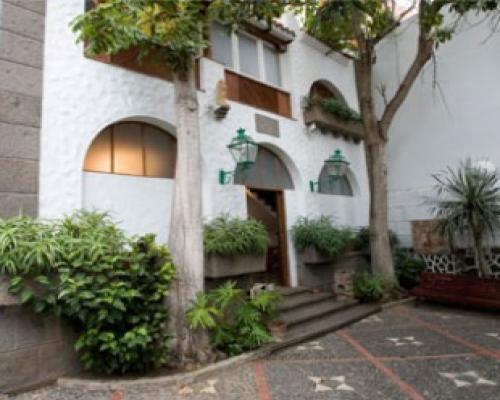
Casa Museo Antonio Padrón
This attraction is located in the municipality of Galdar, in what was the studio of one of the most...
+ Information
Casa Museo León y Castillo
It is located in the historical-artistic complex of San Juan and San Francisco in the city of...
+ Information
Casa Museo Tomás Morales
La Casa-Museo está instalada en la casa natal del poeta Tomás Morales (1884-1921), en la Villa de...
+ Information
Centro Atlántico de Arte Moderno
The Atlantic Center of Modern Art, dependent on the Cabildo de Gran Canaria, was inaugurated on...
+ Information
Gáldar
The city of Gáldar, head of one of the ancient kingdoms of the island, shows part of its oldest...
+ Information
Gran Canaria es Reserva Mundial de la Biosfera
Gran Canaria es un continente en miniatura, con un muestrario de paisajes muy poco corrientes, en...
+ Information
Ingenio
Ingenio es un municipio canario perteneciente a la provincia de Las Palmas. Está situado en el...
+ Information
Isla Gran Canaria
Imagine an island where you can enjoy any landscape you ever dreamt of. A real continent in...
+ Information
La Caldera de Bandama
Se encuentra dentro de los términos municipales de Las Palmas de Gran Canaria, Telde y Santa...
+ Information
Las Palmas
Las Palmas es la capital de Gran Canaria y está localizada a 20 km del aeropuerto en la punta...
+ Information
Montaña de Agüimes
La montaña de Agüimes constituye un elemento referencial en el paisaje de esta zona de Gran...
+ Information
Monumento Natural Barranco del Draguillo
Este monumento se encuentra entre los municipios de Telde e Ingenio. Constituye una unidad...
+ Information
Monumento Natural de Arinaga
Este monumento se localiza en el municipio de Agüímes. Las montañas de Arinaga, constituyen...
+ Information
Monumento Natural del Montañón Negro
Este monumento natural se localiza entre los municipios de Moya, Gáldar, Santa María de Guía y...
+ Information
Monumento Natural Riscos de Tirajana
Este monumento natural es un espacio de destacado interés geológico y geomorfológico, en cuya...
+ Information
Monumento Natural Roque de Aguayro
Este monumento se localiza en los municipios de Santa Lucía y Agüímes. Se constituye como...
+ Information
Monumento Natural Tauro
Este monumento se encuentra en el municipio de Mogán. Es una estructura montañosa situada en las...
+ Information
Museo Canario
El Museo Canario se encuentra en la ciudad de Las Palmas de Gran Canaria, en el histórico barrio...
+ Information
Museo de Historia de Agüimes
Localizado en el municipio de Agüimes, este museo se encuentra en un edificio que perteneció a...
+ Information
Museo de la Historia y Tradiciones de Tejeda
Este museo se localiza en unos de los edificios más singulares del municipio. Fue rehabilitado,...
+ Information
Museo de la Rama
El Museo de La Rama es un espacio para poder ver, comprender y disfrutar de la esencia de la fiesta...
+ Information
Museo de la Zafra
Este museo exhibe los aspectos más importantes de la reciente historia de Santa Lucía, los...
+ Information
Museo Diocesano de Arte Sacro
El Museo Diocesano de Arte Sacro de Las Palmas de Gran Canaria también conocido como Museo...
+ Information
Museo Elder de la Ciencia y la Tecnología
Este museo, se localiza en la ciudad de Las Palmas de Gran Canaria. Es un edificio, de casi 7000...
+ Information
Museo y Parque Arqueológico Cueva Pintada
El Museo y Parque Arqueológico Cueva Pintada se encuentra en la ciudad de Gáldar, al noroeste de...
+ Information
Paisaje Protegido de Fataga
El barranco de Fataga fue uno de los últimos lugares donde los aborígenes canarios pudieron...
+ Information
Paisaje Protegido La Isleta
Este fantástico lugar se encuentra en el municipio de Las Palmas de Gran Canaria. Constituye un...
+ Information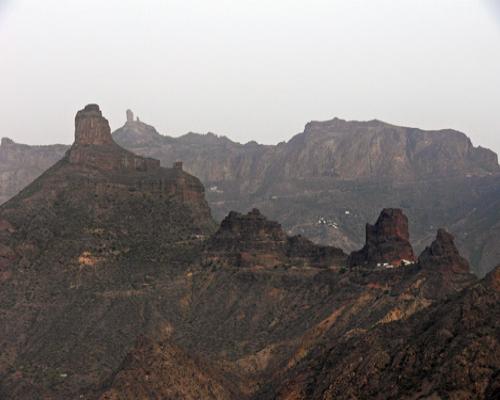
Paisaje Protegido Las Cumbres
Este amplio paisaje protegido ocupa parte de los municipios de Artenara, Gáldar, Santa Mª de...
+ Information
Paisaje Protegido Lomo Magullo
Esta es una pequeña superficie, localizada entre los municipios de Telde y Valsequillo, con un...
+ Information
Paisaje Protegido Pino Santo
Este lugar se encuentra entre los municipios de Las Palmas, Santa Brígida, Teror y San Mateo. Se...
+ Information
Paisaje Protegido Tafira
El área, que se encuentra dentro de los municipios de Telde, Santa Brígida y Las Palmas de Gran...
+ Information
Parque Natural de Pilancones
Este parque, localizado en el municipio de San Bartolomé de Tirajana, se constituye como espacio...
+ Information
Parque Natural de Tamadaba
Este espacio se constituye como Parque Natural desde el año 1987. A su vez, casi todo este espacio...
+ Information
Parque Rural de Doramas
Este Parque Rural contiene un paisaje de una belleza excepcional, en él están presentes varios...
+ Information
Parque rural del Nublo
Este parque rural comprende 26.307,4 hectáreas y alberga a un total de 4.410 habitantes. Se...
+ Information
Playa de las Canteras
Esta playa es un gran tesoro de las Palmas de Gran Canaria. Playa de las Canteras es una laguna...
+ Information
Playa de los Amadores
Esta es una playa artificial, que ofrece unos 800 metros de fina arena dorada y aguas limpias y...
+ Information
Playa de Maspalomas
Maspalomas es playa de finas arenas rubias, donde dunas esculpidas por el viento ofrecen un...
+ Information
Playa del Inglés
Esta playa de casi 3 km de largo, presume de ser una de las más famosas de toda Europa, se...
+ Information
Playa del Puerto Mogan
La playa Mogán está situada en el municipio de Mogán, al sur de Gran Canaria. Esta es una de...
+ Information
Reserva Natural Especial de Azuaje
Esta pequeña reserva se encuentra en los municipios de Firgas y Moya. Se concentra en 5 km de...
+ Information
Reserva Natural Especial de Güigüí
Este espacio protegido está constituido por materiales muy antiguos y forma parte del antiguo...
+ Information
Reserva Natural Especial de Los Marteles
Es una amplia reserva de más de 3500 hectáreas que abarca parte de los municipios de Santa...
+ Information
Reserva Natural Especial de los Tilos de Moya
Esta reserva es uno de los últimos reductos de laurisilva de Gran Canaria. La superficie protegida...
+ Information
Reserva Natural Especial El Brezal
Este espacio del municipio de Santa María de Guía, está constituida por materiales volcánicos y...
+ Information
Reserva Natural Integral de Inagua
En el año 1987 este espacio fue declarado como Parque Natural de Ojeda, Inagua y Pajonales y...
+ Information
Reserva Natural Integral del Barranco Oscuro
Esta reserva se encuentra en los municipios de Moya y Valleseco, fue declarada en 1987 como Parque...
+ Information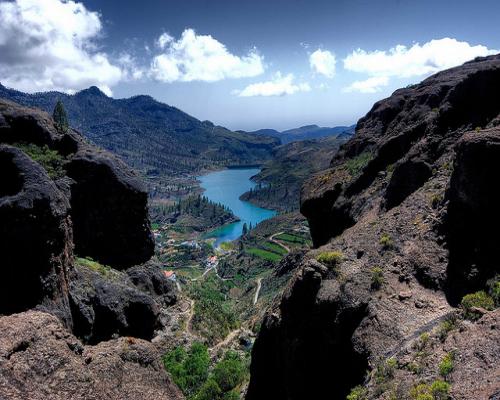
San Bartolomé de Tirajana
San Bartolomé de Tirajana es el municipio más grande de Gran Canaria y de todas las Islas...
+ Information
Santa Lucía de Tirajana
Santa Lucía de Tirajana es un municipio canario situado en el sureste de la isla de Gran Canaria....
+ Information
Sitio de Interés Científico de Juncalillo del Sur
Alberga una de las escasas poblaciones del amenazado chaparro y de la uvilla de mar y el saladillo....
+ Information
Sitio de Interés Científico Jinámar
Esta pequeña zona litoral, cubierta por materiales del complejo sedimentario de Las Palmas, se...
+ Information
Sitio de Interés Científico Roque de Gando
Es el espacio protegido más pequeño de Gran Canaria, con una superficie de media hectárea...
+ Information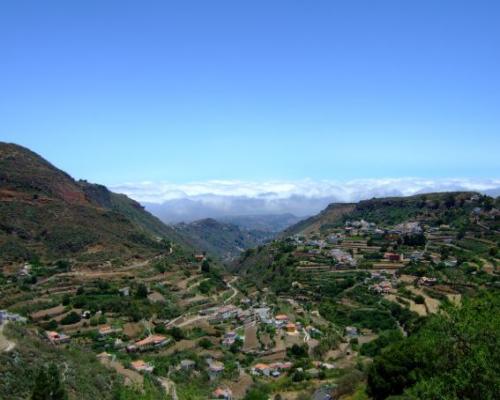
Valleseco
Este municipio está situado en el norte de la isla de Gran Canaria, en las medianías, por encima...
+ Information
Vega de San Mateo
Este municipio de Gran Canaria, está situado sobre una amplia y fértil vega agrícola del tramo...
+ Information